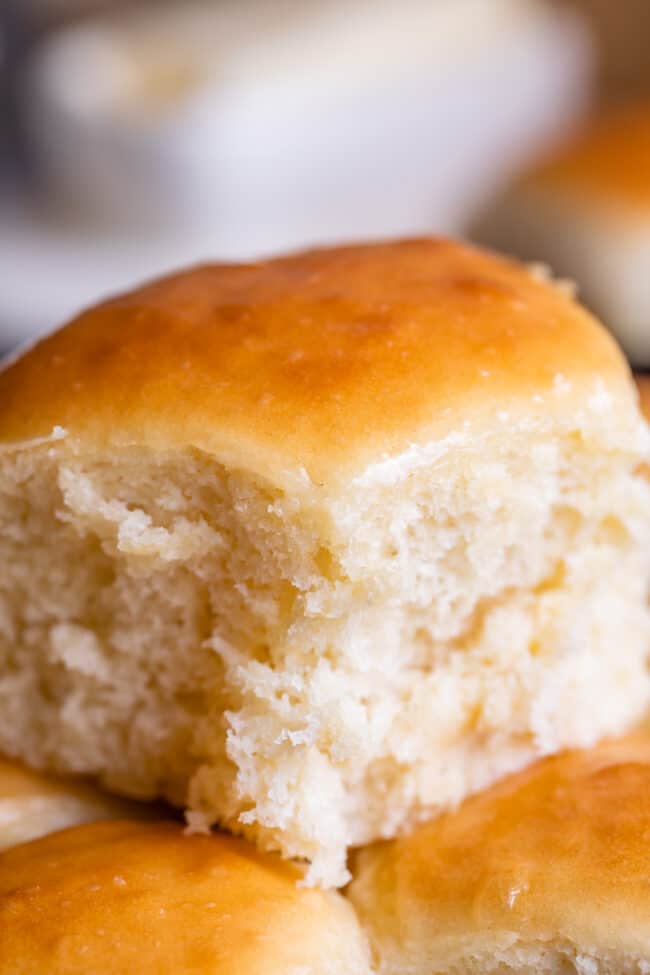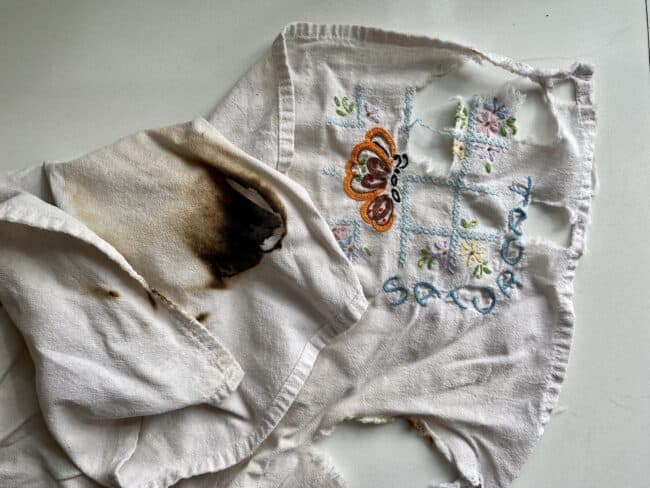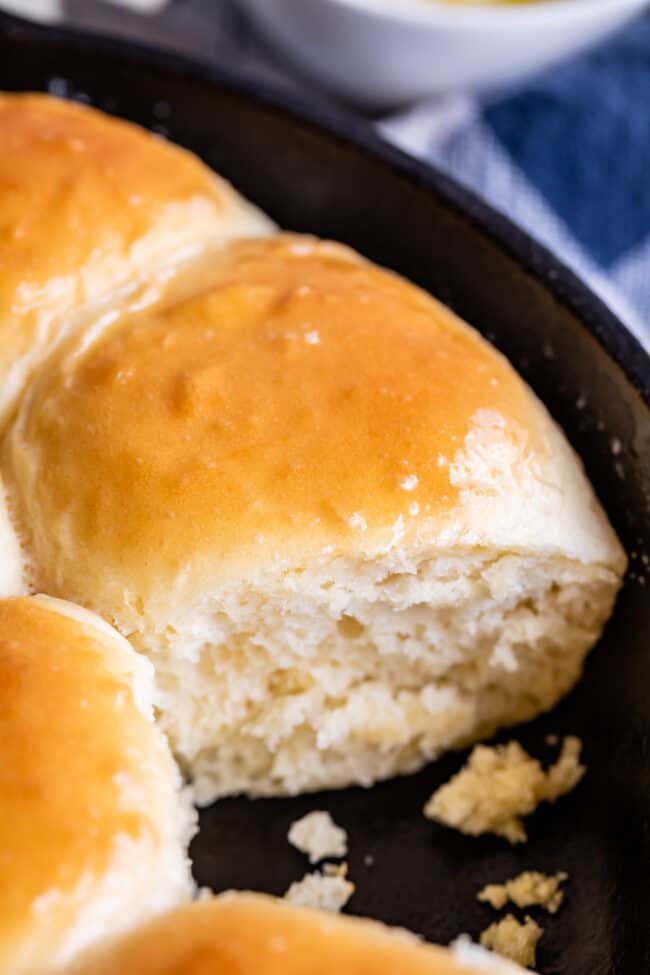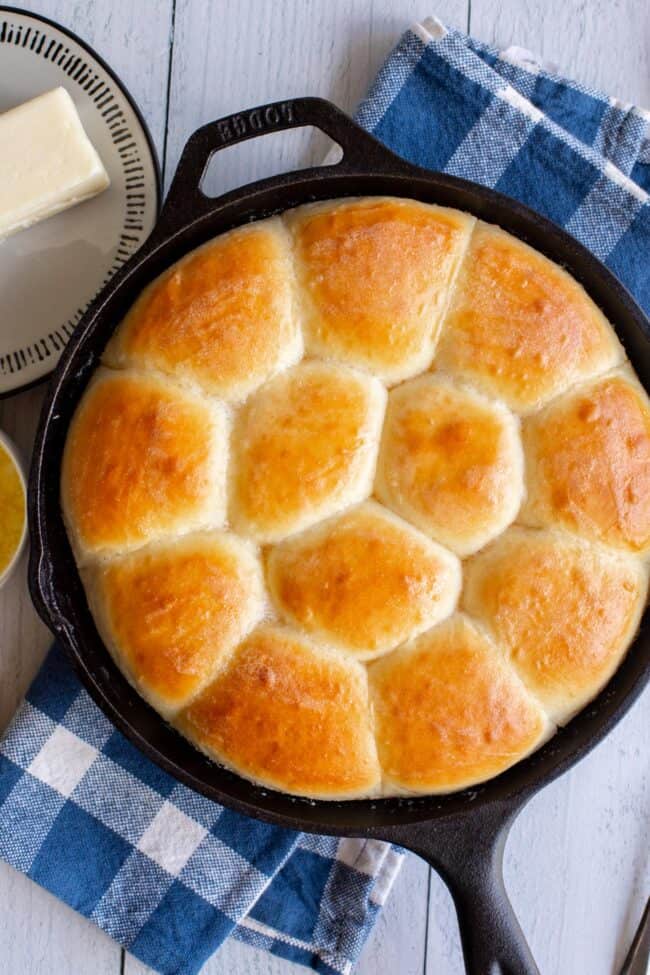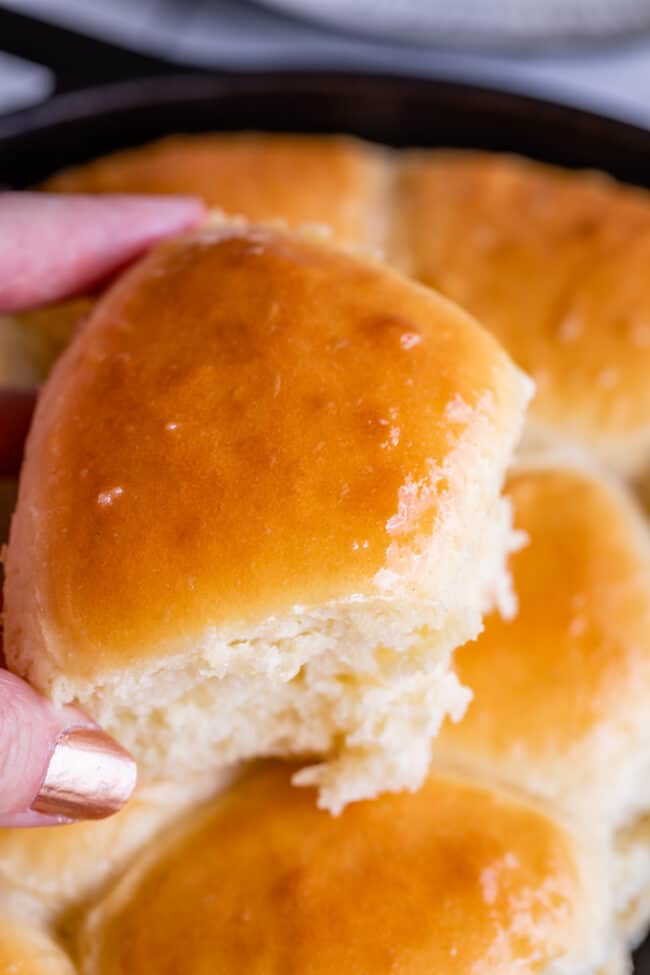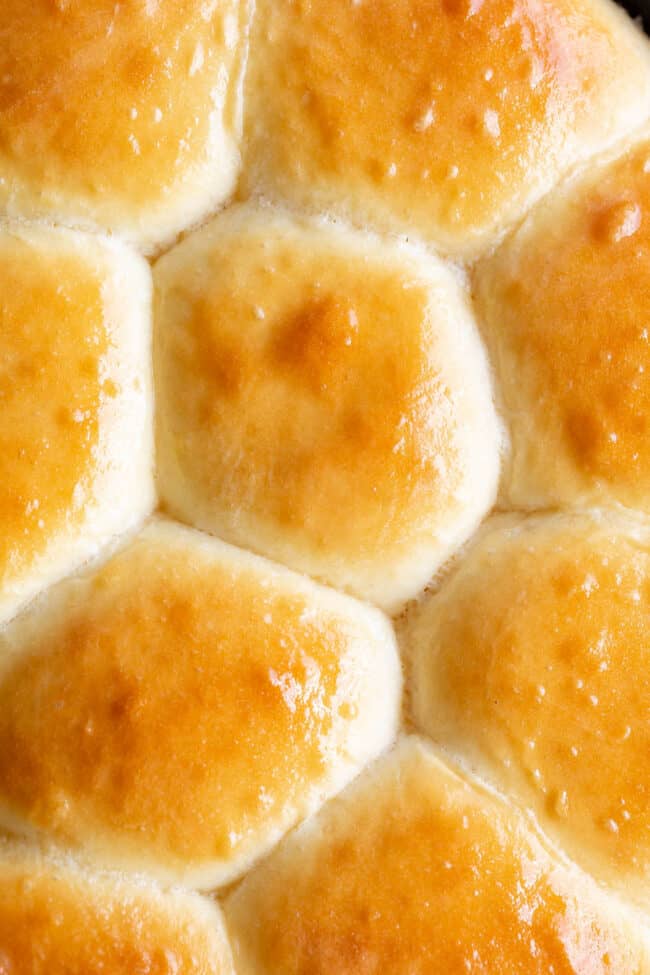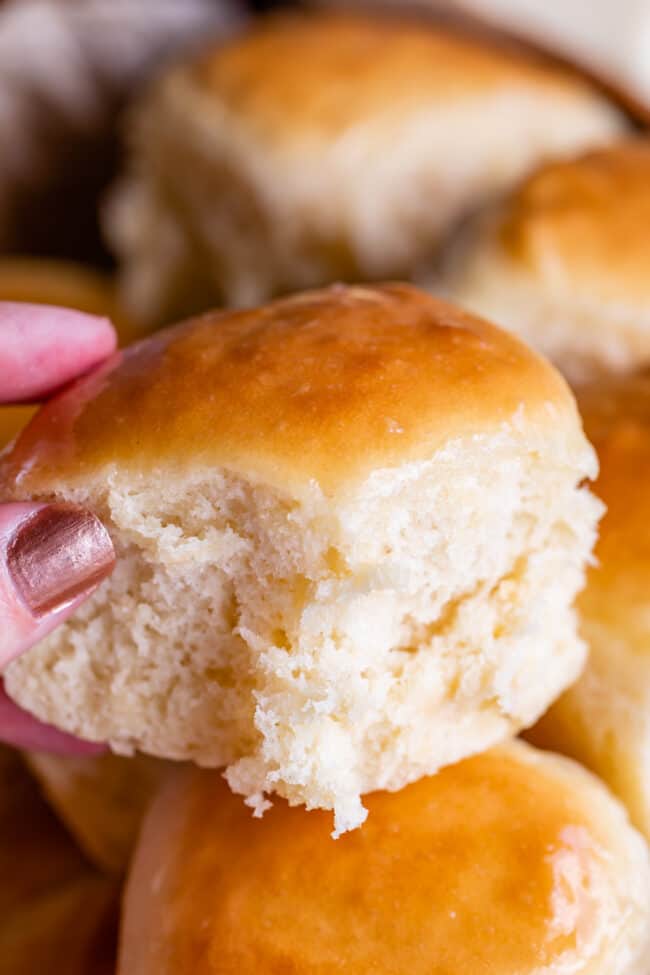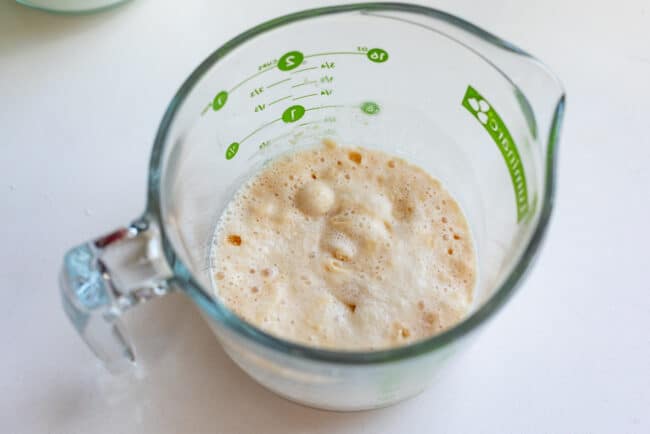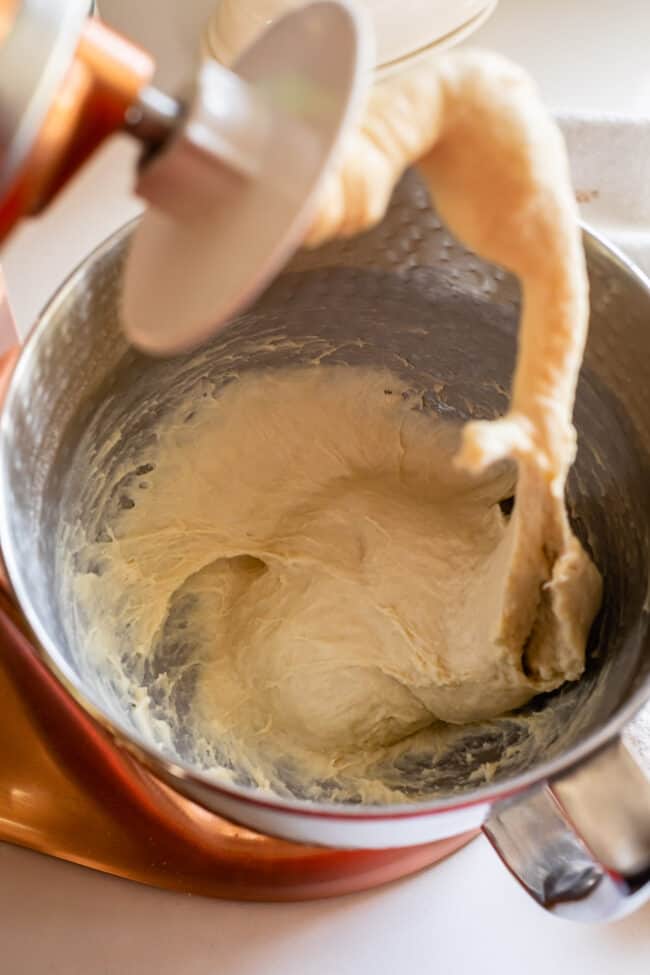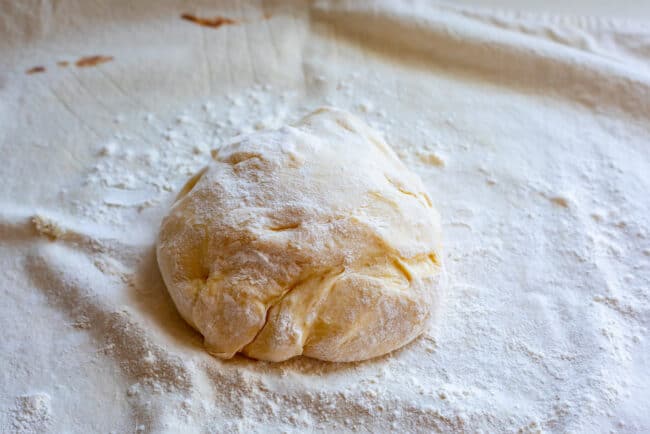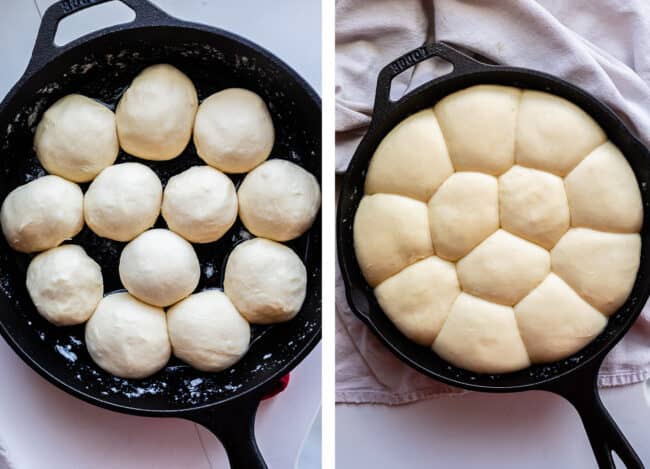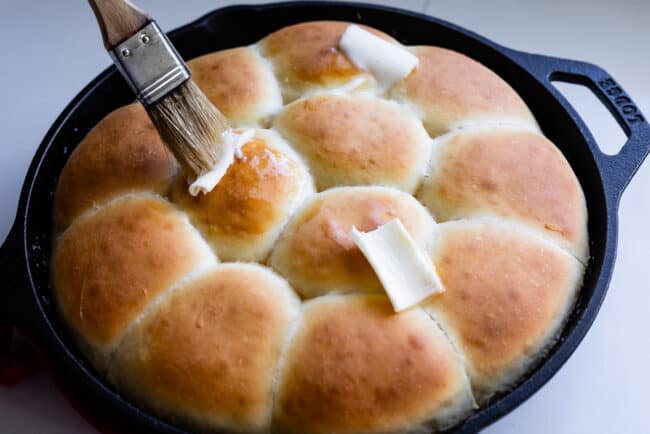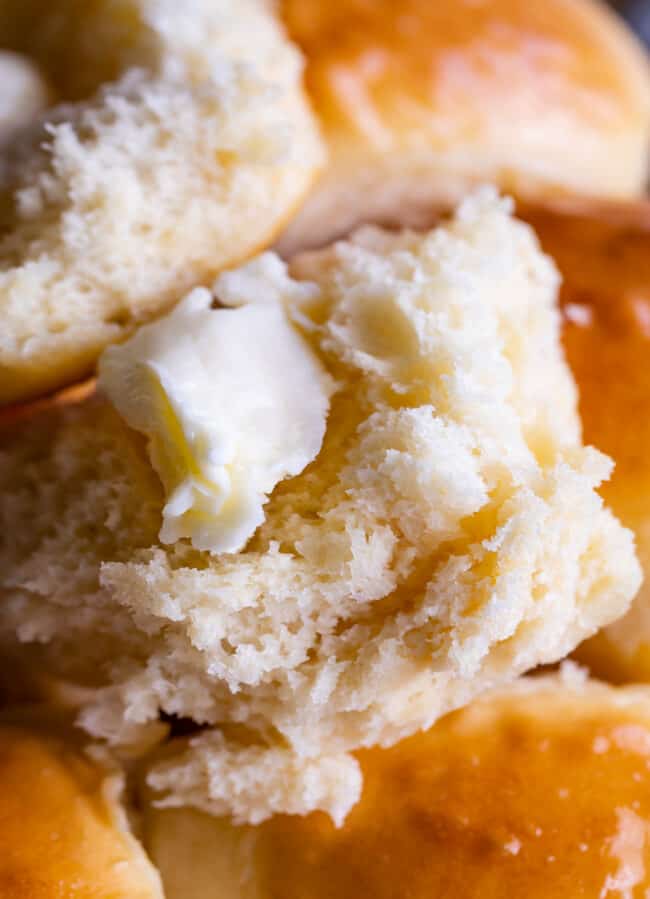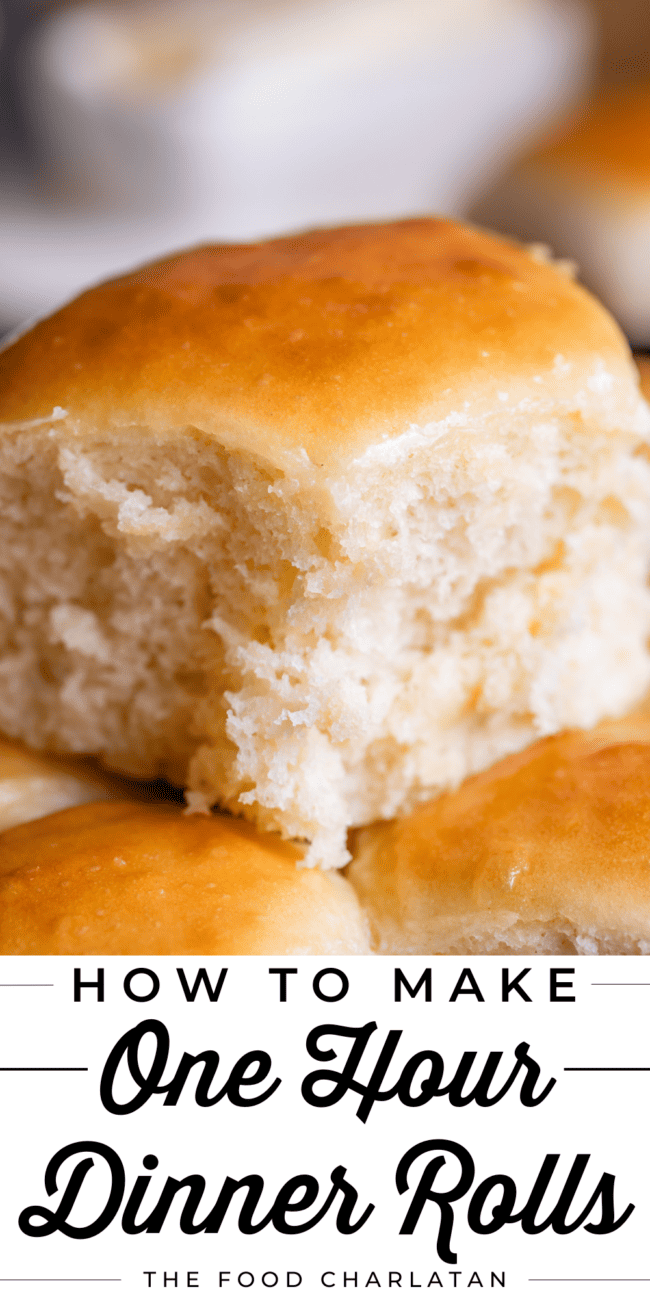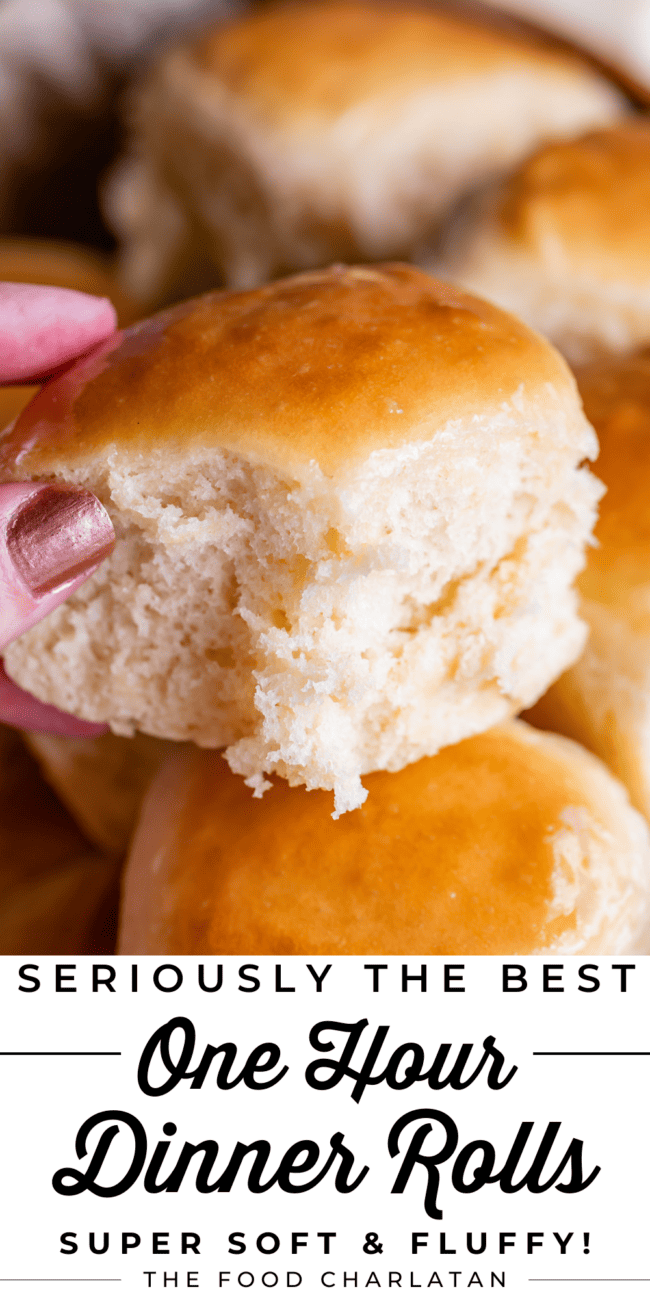Facebook | Pinterest | Instagram It looks pretty pathetic right?? The holes and frayed edges have nothing to do with the recent fire incident. This towel is at least 80 or 90 years old. I use it all the time. My grandma Georgia embroidered this tea towel when she was 10 years old, when she had tuberculosis and was sent away from her family to be quarantined. It was 1930. She was there for a year and a half. She wasn’t getting better, and finally they sent her sister Pauline to be with her (they were Irish twins, only 11 months apart), and once Pauline arrived, Georgia recovered quickly. (Complain about the COVID-19 quarantine all you want. I know I do! But just be grateful you’re not a scared 10-year-old with a deadly disease and have to go to a facility all by yourself where you don’t know anyone. For 18 months. I seriously can’t even imagine!) Grandma Georgia embroidered dozens and dozens of these tea towels in quarantine, made from the softest flour-sack material you’ve ever felt. I have a whole set of them, as do all my siblings. I texted my family that I had burned one of my tea towels and they shared stories about how they are the best towels ever and how sad it is that they are fraying. I mentioned that I don’t believe in not using heirlooms, and my sister Nikki told me why. The sentiment comes from Grandma herself: “While moving grandpa to a nursing home, Grandma found 50-year-old towels that she had got brand new for her wedding and had saved for a special occasion. They had rotted. That’s why she told us all to use the towels she made for us right away. She didn’t want us to never use them. I loved mine until their deaths.” I think it’s pretty funny that I internalized the message about using heirlooms instead of saving them for “a special occasion” but didn’t know the story about my Grandma and the 50-year-old towels. I guess that’s how legends get started! This recipe is adapted from my Aunt Shirley’s Famous Buttery Dinner Rolls, which are truly the most amazing rolls of your life. Today’s version is similar, but can be made in half the time. We’re just skipping that first rise and moving straight to shaping the rolls after a short rest.
Is it better to use milk or water for yeast rolls?
I prefer to use milk in yeast rolls for texture, flavor, and appearance. First, milk makes rolls softer. Ain’t nothin’ better than a fluffy, soft, melt-in-your-mouth dinner roll! Second, milk naturally includes sugar and fat, which give your roll incredible flavor. Third, the sugars in milk help your rolls brown more than water would, so the tops are golden brown and beautiful. No contest, right??
Active Dry Yeast
Active dry yeast is the most common kind of yeast you will see at the store. It needs to be “proofed” in warm (NOT hot!) water before you add the rest of the ingredients. It “takes longer” than instant yeast, but not that much – less than 5 minutes. To me, it’s more annoying to have to keep two kinds of yeast on hand all the time than to just add active dry yeast to some warm water and call it good. I always get nervous mixing yeast straight into the dry ingredients anyway, because what if the liquid you add to the recipe is too hot and kills your yeast? You wouldn’t know until hours later when your bread didn’t rise. For that reason, I always think it’s worth it to “proof” the yeast in a bit of warm water, just to make sure everything is going to turn out in the end. Baking bread takes a while, and I’d rather know right away if I’ve killed my yeast!
Instant Yeast
Instant yeast (or sometimes called bread machine yeast, rapid rise yeast, quick yeast, etc.) is made in a similar way to active dry yeast, but yields a yeast with even finer grains than active dry yeast. Because of this, it dissolves faster than active dry yeast, resulting in a slightly quicker rise. It can also be stirred directly into dry ingredients without dissolving in liquid first. As I’ve mentioned, I don’t really keep it on hand, but if it’s cheaper at the store, already in your cupboard (and not expired), or you have a personal preference, it will work just fine in these rolls. Also, even though it’s not technically required, you can still proof it to make sure that it’s working! You can use active dry yeast OR instant yeast for this recipe. I promise it will work either way. Active dry yeast is the most common kind of yeast you will see at the store. Instant yeast (or sometimes called bread machine yeast, rapid rise yeast, quick yeast, etc.) is made in a similar way to active dry yeast, but yields a yeast with even finer grains than active dry yeast. Because of this, it dissolves faster than active dry yeast, resulting in a slightly quicker rise. It can also be stirred directly into dry ingredients without dissolving in liquid first. But. Here’s the thing. It just doesn’t take that long to dissolve active dry yeast. It takes less than 5 minutes. So to me, it’s more annoying to have to keep two kinds of yeast on hand all the time than to just add active dry yeast to some warm water and call it good. I always get nervous mixing yeast straight into the dry ingredients anyway, because what if the liquid you add to the recipe is too hot and kills your yeast? You wouldn’t know until hours later when your bread didn’t rise. For that reason, I always think it’s worth it to “proof” the yeast in a bit of warm water, just to make sure everything is going to turn out in the end. Baking bread takes a while, and I’d rather know right away if I’ve killed my yeast! Scrape the dough onto a well-floured work surface and shape into a ball. Cover with your grandma’s burnt tea towel, or a regular one will do I suppose. Let rest 5-10 minutes. Divide the dough into 12 pieces, about 2 ounces each. Round one end with your fingers, pinching on the other end, and voila. A cute little roll. Place them in the pan with a bit of space in between. Here’s what they look like after rising. You can totally make these rolls in a 9×13 inch pan if you don’t have a cast iron skillet. Don’t forget to brush with butter right out of the oven!
Use the “fluff and scoop” method for measuring flour. First, take a spoon and fluff the flour in your bag or container. Then gently scoop the flour into your measuring cup and level off the top. Make sure you don’t compress the flour! Use fresh yeast. If your yeast is expired (or just dead), your rolls won’t rise. Did you know you can keep your yeast in the freezer so it’ll last longer? Do it. Also, check that expiration date, and buy smaller amounts of yeast if you don’t go through it quickly/ Use the right flour. Bread flour is great for pizza and crusty loaves, but it has no place in these rolls. All-purpose is your best friend for soft and tender. Let your rolls rise in a warm oven. It speeds up the rising process and makes this roll recipe into the kind of last-minute dinner-saver I’m all about.
If you want to make these rolls ahead and then bake them up fresh, it’s best to shape them as described in step 13, but instead of placing them in a hot pan, place them in a room temperature pan (it should still be greased). Cover them with plastic wrap (make sure it’s tight, so the rolls don’t dry out). You can place them in the fridge for 2 hours up to 24 hours. The rolls will rise some, but will need an additional 30-60 minutes on the counter to rise more while you’re preheating the oven.
Can you refrigerate dinner rolls before baking?
Yes! Shape the rolls, place them in a cool or room temperature greased pan, cover them tightly, and refrigerate them until you’re ready to preheat your oven. Let them sit on the counter for 30-60 minutes to warm up and get a little puffier before actually baking.
How long can yeast rolls be refrigerated before baking?
Once you’ve shaped your rolls, they can stay in the fridge for a couple hours or for a whole day. You might even be able to push it a little longer, but at some point your yeast won’t be active any more and your rolls will deflate (sad). I don’t recommend leaving them in the fridge for more than 24 hours for the best results.
